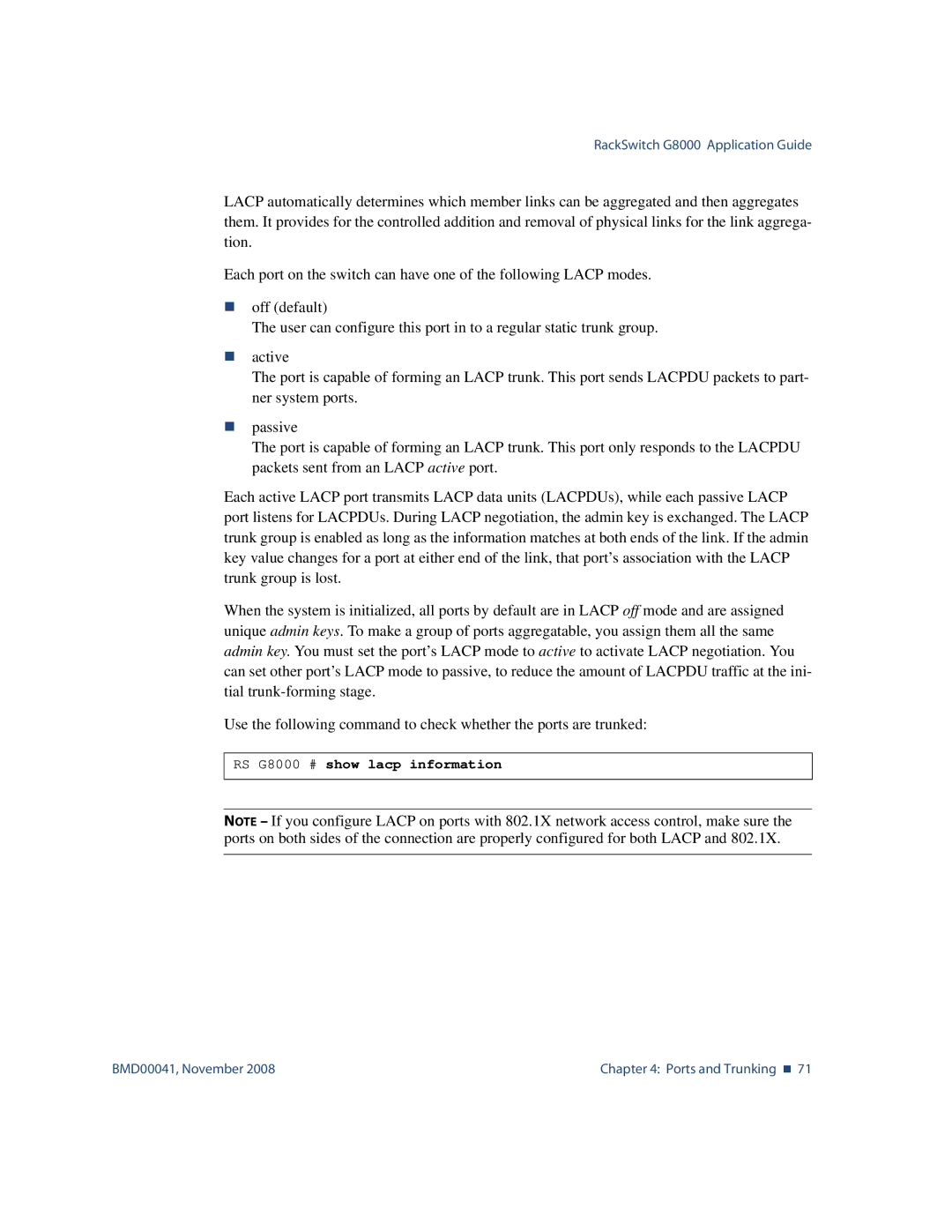
RackSwitch G8000 Application Guide
LACP automatically determines which member links can be aggregated and then aggregates them. It provides for the controlled addition and removal of physical links for the link aggrega- tion.
Each port on the switch can have one of the following LACP modes.
off (default)
The user can configure this port in to a regular static trunk group.
active
The port is capable of forming an LACP trunk. This port sends LACPDU packets to part- ner system ports.
passive
The port is capable of forming an LACP trunk. This port only responds to the LACPDU packets sent from an LACP active port.
Each active LACP port transmits LACP data units (LACPDUs), while each passive LACP port listens for LACPDUs. During LACP negotiation, the admin key is exchanged. The LACP trunk group is enabled as long as the information matches at both ends of the link. If the admin key value changes for a port at either end of the link, that port’s association with the LACP trunk group is lost.
When the system is initialized, all ports by default are in LACP off mode and are assigned unique admin keys. To make a group of ports aggregatable, you assign them all the same admin key. You must set the port’s LACP mode to active to activate LACP negotiation. You can set other port’s LACP mode to passive, to reduce the amount of LACPDU traffic at the ini- tial
Use the following command to check whether the ports are trunked:
RS G8000 # show lacp information
NOTE – If you configure LACP on ports with 802.1X network access control, make sure the ports on both sides of the connection are properly configured for both LACP and 802.1X.
BMD00041, November 2008 | Chapter 4: Ports and Trunking 71 |
